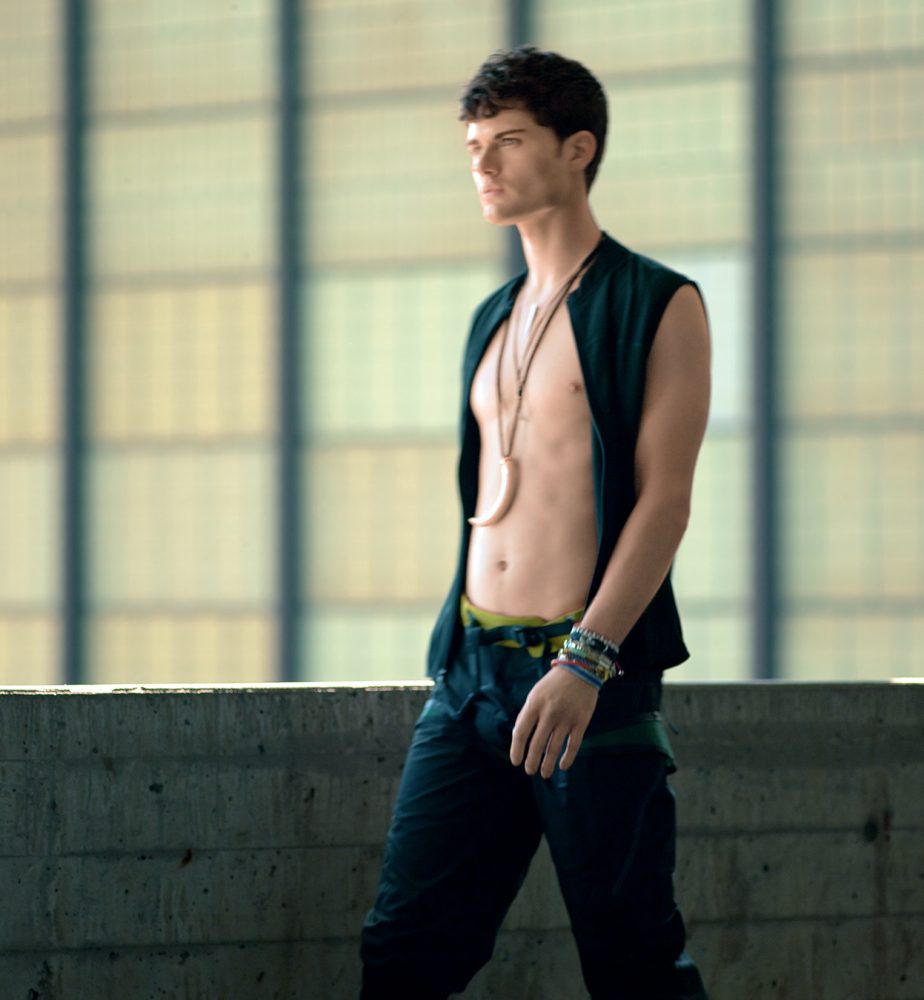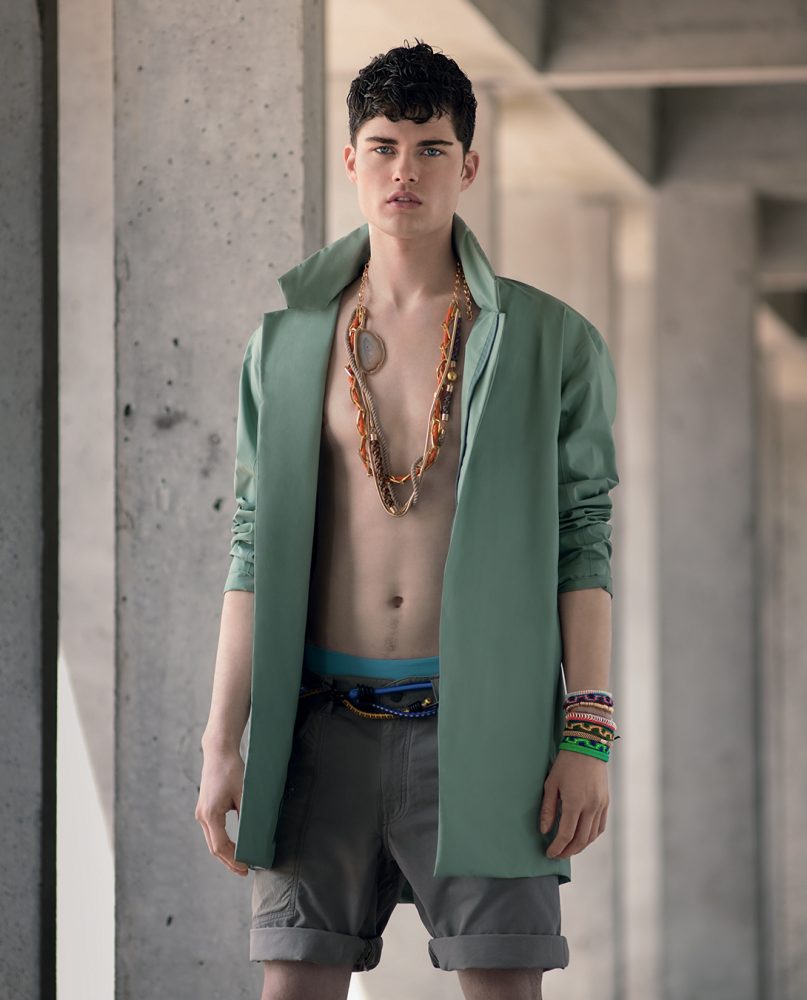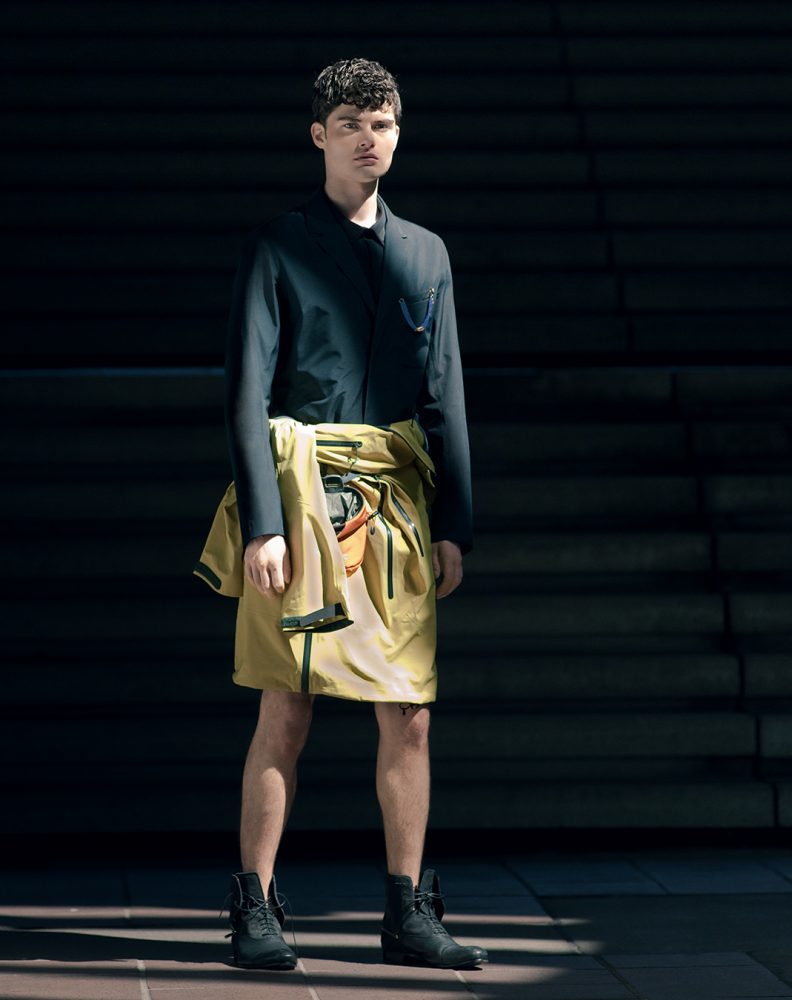An unassuming building, in an unassuming industrial complex in North Vancouver. Hard to believe this is where Arc’teryx, one of the world’s most respected outdoor apparel and equipment companies, has its headquarters. Proximity to the abundant ski runs and hiking trails on Vancouver’s North Shore makes sense, but one might want to imagine the company’s employees scaling cliffs or repelling off them to get to work every day rather than being comfortably nestled at their base. Still, judging by the characters who bustle in and out of the building, it quickly becomes apparent that outdoor sports factor greatly into daily business operations. This is a company whose success in the marketplace is largely the result of their technical innovation. Personal experience and product testing have been, from the outset, a large component of that.
“We call ourselves gear junkies,” Arc’teryx CEO Tyler Jordan says with pride. “Inside these walls, we have the world’s most focused collection of design-minded, outdoor-oriented gear junkies.” With regards to the making of their multifarious iconic products—shell jackets, mid and base layers, packs, and climbing harnesses—it remains a question of which came first, the chicken or the egg: a love of the outdoors or a passion for design and innovation. Jordan laughs. “Within our building, that is a subject of open debate,” he says. “It’s a fairly loaded question. But I would say that it was a love of the outdoors, first and foremost, that brought together a group of people that were intent on doing something different together.”
Jordan is referring to the company’s humble beginnings in the basement of founder Dave Lane in 1989. Back then, the name was Rock Solid, but in 1991, the fledgling firm rebranded themselves as Arc’teryx, a word derived from Archaeopteryx lithographica, the first reptile to climb, grow feathers and take flight. Innovation ensued. Arc’teryx invented a harness buckle that eliminated webbing-strap slippage, and in 1993—the same year that Jordan joined the company as its fourth office employee, heading up the finance department—introduced a form-fitting, thermo-moulded foam, improving comfort and safety for climbers. A year later, they applied a similar technology to backpack pads, straps and belts, making shoulder loads more bearable for orienteering. Still unsatisfied, they took on outerwear, developing new materials with W.L. Gore, the makers of the well-known waterproof fabric, Gore-Tex, and revolutionized seam work with a bonding agent that fuses fabrics together and eliminates stitching punctures. This only brings us to 1997; the advancements Arc’teryx has made over the years are innumerable.
“It’s the combination of both passions that has made some of this possible,” Jordan says. “To get the level of refinement we get in the product, and to do that properly, you have to have designers in the building, and design teams and support teams, who understand how and why the product is going to be used. What we do, honestly, is, we make products that we want. And if we make it so that it passes the litmus test of the people inside this building, then it will generally succeed in the market.”
“By letting people openly build their own communication pathways and portals to talk to each other, and to get the technology and information that they want—that kind of cross-pollination—we get the best result out of that.”
Inside the compound, the main floor is a sea of just such people. In a testament to their in-house operational mandate, every aspect of the company’s product design and research and development occurs under the wing of Arc’teryx’s ornithological emblem, including a separate 30,000-square-foot manufacturing facility, also in Vancouver. “Our commitment has always been to make the best product we could,” Jordan says. “We opened a manufacturing facility in [Vancouver] because that’s what it took to get the level of control we needed to bring the best and most innovative product to market.” It was 1999 that Jordan took over the production side of the business as well, graduating into the role of CEO in February, 2005. Today, the facility still produces about 20 per cent of the company’s output, focusing primarily on Arc’teryx’s most advanced products. More importantly, however, it is the place where proprietary production techniques are tested and developed.
If technical advancement is the lifeblood of the Arc’teryx brand, then the second floor of their headquarters—the home of product design and R&D—is the heart that pumps it through every vein. Despite a labyrinth of drawing tables, clothing racks and fabric bolsters, an overwhelming sense of camaraderie reigns. Hard goods or apparel, there are no boundaries between departments. “I think the experience up here on the second floor is a physical reflection of the cultural identity of the company,” Jordan says. “The vibe and energy, and the kind of collaboration and dynamic nature—there is a lot of passion around what we do, both in the activities and the products, and it’s reflected in the work too. By letting people openly build their own communication pathways and portals to talk to each other, and to get the technology and information that they want—that kind of cross-pollination—we get the best result out of that, for sure.”
Conroy Nachtigall sits at the centre of it all. A strategic place, perhaps, for the chief designer of Veilance, Arc’teryx’s smallest and youngest department, which turns out the company’s decidedly more urban capsule collection for men. Now entering its fourth season, Veilance draws from a familiar menswear vocabulary—field jackets, blazers, overcoats, button-down shirts—while maintaining fabrications and finishes that look and feel distinctively like Arc’teryx. Just when you thought the company had conquered all the most extreme environments on earth, they’ve taken a new and notoriously volatile one head on: the world of fashion.
“At a certain point, I became aware that a lot of people were buying Arc’teryx products without much intention of wearing them in the back country,” Jordan says. “We try to design product with some inherent truth in terms of the design or the function—so, in a way, we’ve been giving these consumers a product that wasn’t ideal for their particular use. It’s great that they like it and it’s great that they’re going to benefit from it, but wouldn’t it be even better if we focused on what they are actually going to use it for?” The result of that observation, you might say, is the understanding that regardless of whether a person is climbing a mountain or a corporate ladder, there should be a product available in the Arc’teryx range that delivers optimal performance for them.
In the words of Conroy Nachtigall, “Men will go out and buy the latest stereo equipment and high-end vehicles and have computers in their homes, but when it comes to their wardrobe, a lot of them are stuck in this wool suit, classical plaids thing.” The passion rises in his voice as he unravels the garments with his description of the line: “We’re saying that your clothing can be as progressive, as forward thinking, as technological, as some of those other things that you have.”
“We’re designing products for a market that we believe will exist in the future.”
Nachtigall, a Central Saint Martins design school graduate, spent two years working on snow-sport apparel for Arc’teryx before Jordan asked him to kick off Veilance. He learned the ins and outs of the business, how they get a product from A to Z, discovering the company’s history of innovation and how it could benefit even a city slicker. “For the line I’m doing now, a lot of the drawings happen almost as an afterthought,” Nachtigall says. “You’re starting with raw materials and seeing what you can develop from this particular textile that has great properties, what it could be—or a way of putting pockets together, or not, or finding ways that you can strip things out that hinder the tactile element of wearing it.” These subtle nuances in the garments aren’t readily apparent at first glance. It’s only after you’ve analyzed the way every seam lines up that you start to understand the intricacy of Nachtigall’s work. “Once you’re there,” Nachtigall says, “once you discover making a lightweight garment might have a real-world benefit, it’s hard not to want to do that all the time.”
For Veilance, however, the challenge extends beyond design; it presents a fairly significant problem for retailers who need seasonal change to keep the interest of their customers. If Arc’teryx plans to succeed with Veilance, they might as well deconstruct the whole fashion system. It’s a challenge Jordan accepts with arms wide open. “If we are really trying to innovate and maintain that level of detail, you can’t do that every six months and just reinvent the product. It may have taken you two years to get there in the first place, and you put everything you had into it. That’s one of the tough parts of the Veilance market—the world is constantly expecting something new. We’re very conscious of that, and very honest with people, saying that that’s not how we’re working here.”
Yes, Veilance will change and evolve with the seasons, but only in small ways as they continue to refine each garment and hone their assortment of products in the range. In the meantime, Jordan and Nachtigall are taking a chance, hoping that the tides will change in their favour. “We’re designing products for a market that we believe will exist in the future,” Jordan explains. “We believe that people buying product for city life are going to want everything they are getting from their city product today, plus they are going to want improved performance over time. I think that is inevitable.” The only question for Arc’teryx, then, is whether that is happening right now, or whether it will happen five years from now or fifty years from now. “With Veilance, we weren’t in a hurry to try and drive a lot of sales because we realized we couldn’t change the world overnight in that regard,” Jordan explains. “It’s a question of whether the world is on the cusp of shifting in that direction or not. And if it does, we want to be on the forefront of the wave.”
Jordan is reluctant to admit the project is a labour of love; he sees it more as the starting point of his long-term vision for the company, one that extends well beyond his tenure as CEO, even as successful as that may be. “When we think of fashion,” he says, “we think of brands that have built a reputation over 50 or 100 years.” Indeed, many of the world’s most prestigious luxury brands have a signature item that called them to attention and brought their successes to new heights. Think luggage at Louis Vuitton or horse bridles at Hermès. “We’re trying to replicate that with Veilance a little bit, so the decisions we make today ensure that Arc’teryx carries the same meaning and has the same ideals a century from now.” Even as the company continues in their experimentation of what this will mean for them, it remains fairly certain the result will be something made to last.
Model: Joel Semande for Next Model Management.
Grooming: Negar Hooshmand for Lizbell Agency using TRESemmé.
Photographer’s Assistants: Liam Mitchell and Ian Azaria.












